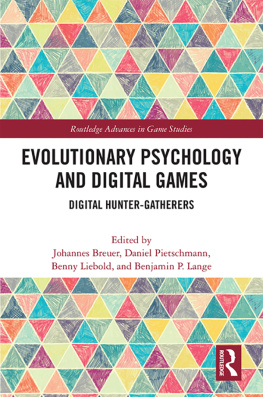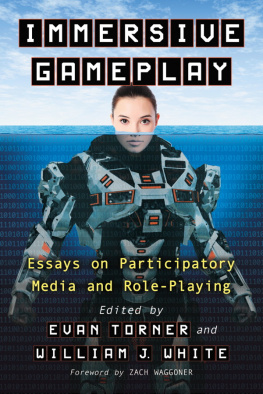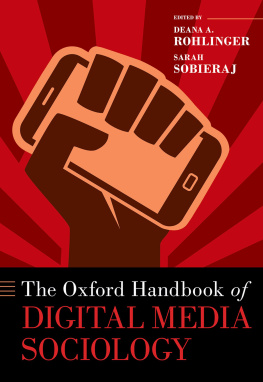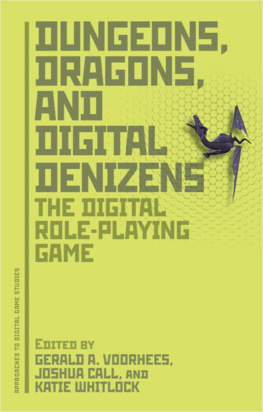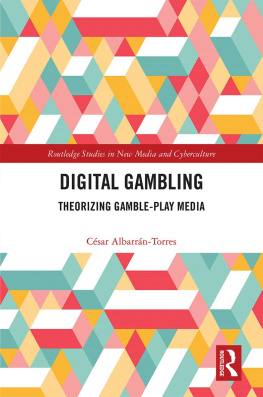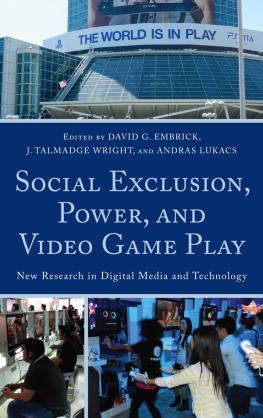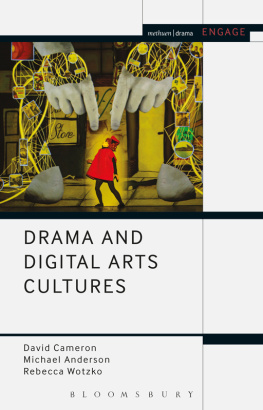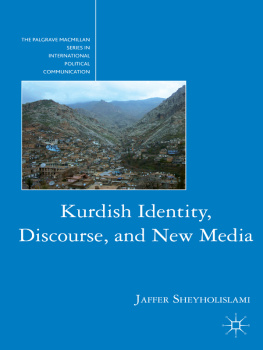Playful Identities
The Ludification of Digital Media Cultures
Edited by
Valerie Frissen
Sybille Lammes Michiel de Lange Jos de Mul
Joost Raessens
Amsterdam University Press
This book is published in print and online through the online OAPEN library (www.oapen.org).
OAPEN (Open Access Publishing in European Networks) is a collaborative initiative to develop and implement a sustainable Open Access publication model for academic books in the Humanities and Social Sciences. The OAPEN Library aims to improve the visibility and usability of high quality academic research by aggregating peer reviewed Open Access publications from across Europe.
This work is part of the Humanities research programme Transformations in Art and Culture, sponsored by the Netherlands Organisation for Scientific Research (NWO).
Cover illustration: Photograph of the game Id Hide You, Blast Theory, 2012 (courtesy of Blast Theory).
Cover design: Suzan Beijer
Lay-out: Crius Group, Hulshout
Amsterdam University Press English-language titles are distributed in the US and Canada by the University of Chicago Press.
ISBN 978 90 8964 639 2
e-iSBN 978 90 4852 303 0
NUR 670
Creative Commons License CC BY NC
(http://creativecommons.org/licenses/by-nc/3.0)
All authors / Amsterdam University Press, Amsterdam, 2015
Some rights reserved. Without limiting the rights under copyright reserved above, any part of this book may be reproduced, stored in or introduced into a retrieval system, or transmitted, in any form or by any means (electronic, mechanical, photocopying, recording or otherwise).
Valerie Frissen, Sybille Lammes, Michiel de Lange, Jos de Mul & Joost Raessens
Immense est le domaine dujeu.
Emile Benveniste
Foreplay
A playful specter is haunting the world. Since the 1960s, when the use of the word ludic became popular in both Europe and the US to designate playful behavior and artifacts, playfulness has become increasingly a mainstream characteristic of modern and postmodern culture. In the first decade of the 21st century we can even speak of the global ludification of culture (Raessens 2006; 2014). Perhaps the first thing that comes to mind in this context is the immense popularity of computer games, which, as far as global sales are concerned, have already outstripped Hollywood movies. In the US, 8- to 18-year-olds play on average an hour and a half daily on consoles, computers and handheld gaming devices, including mobile phones (Rideout et al. 2010, 2-3). This is by no means only a Western phenomenon. In South Korea, for example, about two-thirds of the countrys total population frequently plays online games, turning computer gaming into one of the fastest growing industries and a key driver for the Korean economy (Jin 2012).
Postmodern culture has been described as a game without an overall aim, a play without a transcendent destination (Minnema 1998, 21). Sociologist Zygmunt Bauman maintains that human identity has even become a playful phenomenon. In ludic culture, he argues, playfulness is no longer restricted to childhood, but has become a lifelong attitude: The mark of postmodern adulthood is the willingness to embrace the game whole-heartedly, as children do (Bauman 1995, 99).
The focus of this volume is on the complex relationship between play, media, and identity in contemporary culture. The chapters in this book investigate, from different perspectives, the role that digital information and communication technologies play in the ludification of personal and cultural identity. The focus on (new) media is not only motivated by the dominant role that digital media play in our present culture, but also by the intuition that play is central [...] to media experience (Silverstone 1999, 63; cf. Thimm 2010).
In this introductory chapter, we analyze these three interconnected phenomena that constitute the subject of this volume, offering a conceptual background that enables the reader to situate the contributions to this volume. This introductory chapter consists of three main sections, which correspond to the three parts of this volume, devoted to play, media, and identity.
With regard to the dimension of play in this triad, our starting point is the theory of play developed by Johan Huizinga in his famous 1938 book Homo ludens. It is not without reason that Homo ludens is regarded as a classic in the study of play. Although published more than seventy-five years ago, Huizingas central claim, that culture and civilization arises in and as play, and never leaves it (1955, 173), still offers a fruitful framework for the study of the ludification of human identity in our contemporary media landscape, or playland as Kenneth Gergen calls it in this book. This claim has found wide acclaim. Thanks to recently developed fields like game and leisure studies, we can even speak of a Huizinga-renaissance. However, we argue that in order to apply Huizingas theory of play to the world of digital technologies, Homo ludens needs a serious update because play and technology are almost complete opposites for Huizinga.
In this introductory chapter we will update Homo ludens to a 2.0 version that goes beyond the opposition between contemporary play and technologies. In the section on media, we will use the insights from leading scholars in the domains of New Media and Game Studies to substantiate this position further by focusing on the playful dimension of digital technologies. We argue here that both media explicitly designed for play, such as computer games, as well as digital technologies in general, have an inherent ludic dimension. This dimension is closely connected with medium-specific qualities like multimediality, virtuality, interactivity, and connectivity.
In the last section of this chapter, the emphasis lies on the role that these ludic technologies play in the construction of personal and cultural identities. Here the vantage point is Paul Ricoeurs theory of narrative identity. According to this theory, narrative is not only an appropriate metaphor for human identity, but human beings actually construct their identity through stories, ranging from explicit biographies and autobiographies to fictional accounts of human life in novels. In light of the aforementioned ludification of digital culture, we propose to supplement Ricoeurs theory of narrative identity with a theory of ludic identity construction that explains how both play and games are currently appropriate metaphors for human identity, as well as the very means by which people reflexively construct their identity.
Phrases like self-construction and construction of cultural identity might suggest that this process is fully controlled by an autonomous subject. Evidently, this is not the case. The fact that the self is not something given, but a construction, does not necessarily imply that the self is the (main) constructor. Commercialization, globalization, and technological homogenization mold the subjects self-construction to the logic of an external system. As the chapters in this volume will demonstrate in more detail, practices of reflexive identity construction constantly take place in a tension between communicative action and commercialization, between localization and globalization, and between heterogenization and homogenization.
Play
Viewing man and world sub specie ludi is of course not a new phenomenon. Already early in Western thought, Heraclitus speculated that the course of the world is a playing child moving figures on a board - the child as absolute ruler of the universe (Sprague 2001). Ludic accounts of man and the world have been formulated at all times and in all cultures. In Western culture we can witness an important development during the past two centuries. Whereas the Enlightenment did not show a deep interest in play, the Romantic movement heralded a new fascination for this phenomenon. Friedrich Schiller - who can be regarded as the founding father of contemporary ludology - even considered the play drive as the core of humanity since it enables man to reconcile necessity and freedom. As he famously phrased it in On the aesthetic education of man: Man plays only when he is in the full sense of the word a man, and he is only wholly Man when he is playing (Schiller 2004, 80). Alongside reasoning (Homo sapiens) and making (Homofaber), playing (Homo ludens) now advanced to the center of attention. Philosophers including Nietzsche, Wittgenstein, Heidegger, Gadamer, Marcuse, Deleuze, and Derrida (most of them considered as forerunners or representatives of postmodern culture), followed the ludological footprints of Heraclites and Schiller in their attempts to transform the modern, predominantly rationalistic and utilitarian ontology and anthropology (Axelos 1964; cf. Minnema 1998). Moreover, play and games have gained strong attention in the natural sciences, social sciences, and humanities. One can think, for example, of the implementation of game theory in biology (Sigmund 1993), economics (Neumann and Morgenstern 1944; Leonard 2010), and cultural anthropology (Bateson 1955; 1977). In addition to the increased interest in play and games in these already existing disciplines, in the last decades - motivated by the substantial growth of leisure time and the growth of ludo-industry and ludo-capitalism (Dibbell 2008) - several new fields entirely devoted to the study of play and (computer) games have emerged (cf. Mitchell et al. 1934; Avedon and Sutton-Smith 1971; Raessens and Goldstein 2005; Mayra 2008; Ritterfeld, Cody and Vorderer 2009; Fuchs et al. 2014).


